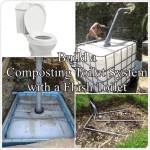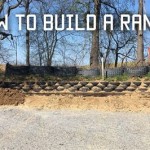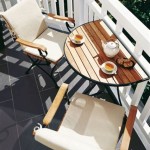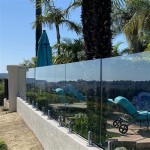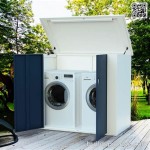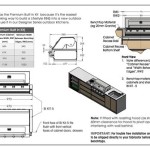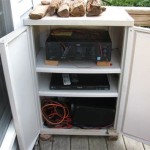Crafting Your Private Oasis: A Comprehensive Guide to Building a Homemade Outdoor Hot Tub
The allure of a hot soak under the open sky is undeniable. Owning a traditional hot tub, however, can present significant financial and logistical hurdles. An alternative solution is constructing a homemade outdoor hot tub, a project that allows for customization, cost savings, and a unique sense of accomplishment. This article outlines the key considerations and steps involved in building a functional and aesthetically pleasing outdoor hot tub.
Planning and Design Considerations
Prior to commencing construction, a thorough planning phase is critical. This involves selecting a suitable location, determining the desired size and shape of the hot tub, and researching applicable building codes and regulations. Neglecting these preliminary steps can lead to costly errors and potential safety hazards.
Location: The chosen location should be relatively level and capable of supporting the significant weight of a filled hot tub. Consider proximity to power sources, water supply, and drainage. Privacy and scenic views are also important factors to contemplate. Avoid locations directly beneath trees, as falling leaves and debris can complicate maintenance.
Size and Shape: The dimensions of the hot tub will dictate its material requirements and heating system needs. Consider the number of people who will typically use the hot tub simultaneously when determining the appropriate size. Common shapes include circular, square, and rectangular, each offering unique aesthetic and functional advantages. A larger tub will necessitate more materials and a more powerful heating system, but will also provide greater comfort and space.
Building Codes and Regulations: Before starting any construction, it is essential to consult local building codes and regulations. These may dictate specific requirements regarding pool fencing, electrical safety, and water drainage. Failure to comply with these regulations can result in fines, delays, and even the forced removal of the hot tub. Contacting the local building permit office is a crucial step in the planning process.
Material Selection: A wide range of materials can be used to construct a homemade hot tub, each with varying levels of durability, cost, and aesthetic appeal. Common choices include wood, concrete, and metal. Wood offers a natural and aesthetically pleasing look but requires regular maintenance to prevent rot and decay. Concrete is durable and versatile but can be more challenging to work with. Metal, particularly stainless steel, is strong and resistant to corrosion but can be more expensive. The selection of material often depends on the desired aesthetic and the builder's skill level.
Heating System: The heating system is a crucial component of any hot tub. Options include electric heaters, propane heaters, and wood-fired heaters. Electric heaters are convenient and easy to operate but can be expensive to run, especially in colder climates. Propane heaters offer faster heating times but require a propane tank and regular refilling. Wood-fired heaters are a cost-effective option for those with access to firewood but require more manual effort. The selection of a heater should be based on factors such as budget, heating speed, and environmental considerations.
Construction Techniques and Considerations
The actual construction of the hot tub will vary depending on the chosen materials and design. However, certain fundamental techniques and considerations apply to most projects. These include proper foundation construction, watertight sealing, and safe electrical wiring.
Foundation: A solid foundation is essential to prevent settling and cracking. For a wood-framed hot tub, a concrete slab is often the preferred foundation. The slab should be level and adequately sized to support the weight of the filled hot tub. For a concrete hot tub, the foundation is typically poured as an integral part of the structure. Proper preparation of the ground beneath the foundation is crucial to ensure long-term stability.
Framing: If using wood, the framing should be constructed using pressure-treated lumber to resist rot and decay. The frame should be sturdy and well-braced to withstand the pressure of the water. Corner joints should be reinforced with metal brackets or bolted connections. The dimensions of the framing should precisely match the planned dimensions of the hot tub. Accurate measurements and careful construction are essential at this stage.
Sealing: Ensuring a watertight seal is crucial to prevent leaks and water damage. For a wood-framed hot tub, a flexible liner is typically used to create a waterproof barrier. The liner should be carefully installed to avoid punctures or tears. For a concrete hot tub, a waterproof sealant is applied to the interior surface. Multiple coats of sealant may be necessary to achieve a complete seal. Regular inspections and maintenance are required to identify and repair any leaks.
Plumbing: Proper plumbing is essential for circulating and draining the water. This includes installing inlet and outlet fittings, connecting the pump and filter, and providing a drain system. The pipes should be sized appropriately to handle the flow rate of the pump. All plumbing connections should be watertight to prevent leaks. Incorporating a filtration system is crucial for maintaining water clarity and hygiene.
Safety and Maintenance
Safety and maintenance are paramount considerations for any outdoor hot tub. This includes implementing safety measures to prevent accidents and performing regular maintenance to ensure the hot tub remains clean and functional.
Electrical Safety: Electrical wiring should be performed by a qualified electrician to ensure compliance with safety codes. A ground fault circuit interrupter (GFCI) should be installed to protect against electrical shock. All electrical components should be properly grounded. Regular inspections of the electrical system are necessary to identify and address any potential hazards. Never attempt electrical work without proper training and certification.
Water Chemistry: Maintaining proper water chemistry is crucial for hygiene and preventing corrosion. This involves regularly testing the water and adjusting the pH, alkalinity, and sanitizer levels. Chlorine or bromine are commonly used as sanitizers to kill bacteria. Regular water changes are also necessary to prevent the buildup of contaminants. Proper water chemistry will extend the lifespan of the hot tub and ensure a safe and enjoyable bathing experience.
Cleaning and Maintenance: Regular cleaning is essential to prevent the buildup of algae and debris. This includes scrubbing the interior surfaces, cleaning the filter, and skimming the water to remove floating particles. Periodic draining and refilling of the hot tub are also necessary to maintain water quality. Inspecting the structure and plumbing for leaks or damage is also a part of routine maintenance. Addressing minor issues promptly will prevent them from escalating into more serious problems.
Safety Measures: Implementing safety measures is crucial to prevent accidents, especially for children and elderly individuals. This includes installing a fence around the hot tub, providing a secure cover, and posting warning signs. Educating all users about the potential hazards of hot tub use is also important. Supervise children closely while they are using the hot tub. Limiting soak times and avoiding alcohol consumption can also reduce the risk of accidents.
Winterization: In colder climates, it is essential to properly winterize the hot tub to prevent damage from freezing temperatures. This involves draining the water, cleaning the pipes, and protecting the equipment from the elements. Failure to winterize the hot tub can result in cracked pipes, damaged equipment, and costly repairs. Following a comprehensive winterization procedure will ensure the hot tub remains in good condition throughout the winter months.
Building a homemade outdoor hot tub is a rewarding project that requires careful planning, meticulous construction, and diligent maintenance. By addressing these key considerations, and adhering to the necessary safety precautions, it is possible to create a private oasis for relaxation and enjoyment. The cost savings and customization options make it an attractive alternative to purchasing a pre-built hot tub.

Diy Hot Tub Build Guide Step By Materials More Field Mag

I Made A Wood Hot Tub Out Of 2x6s

Diy Hot Tub Build Guide Step By Materials More Field Mag

How To Build A Diy Wood Fired Hot Tub For 2 300 Field Mag

20 Homemade Hot Tubs That Are Budget Friendly Decoist

14 Inexpensive Diy Hot Tub Plans Insteading

18 Ingenious Diy Hot Tub Plans Ideas Suitable For Any Budget Outdoor

20 Homemade Hot Tubs That Are Budget Friendly Decoist

About Building A Diy Hot Tub Custom Built Spas

9 Diy Outdoor Hot Tubs You Can Build Yourself Shelterness
Related Posts

